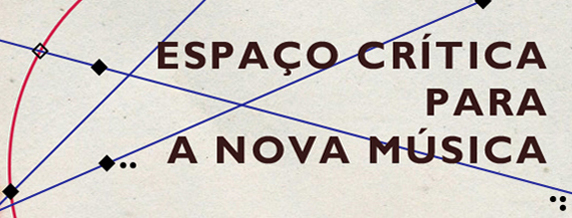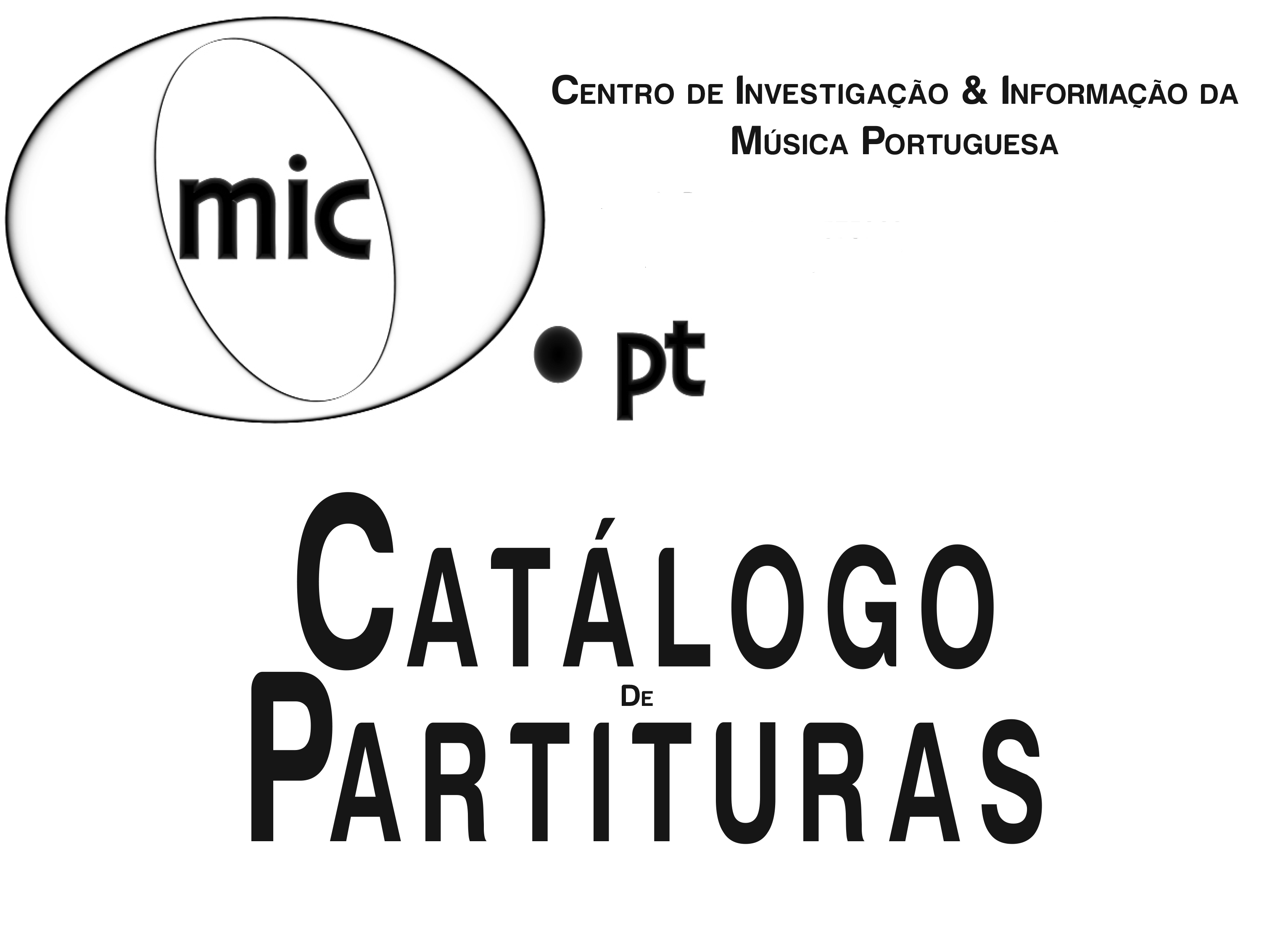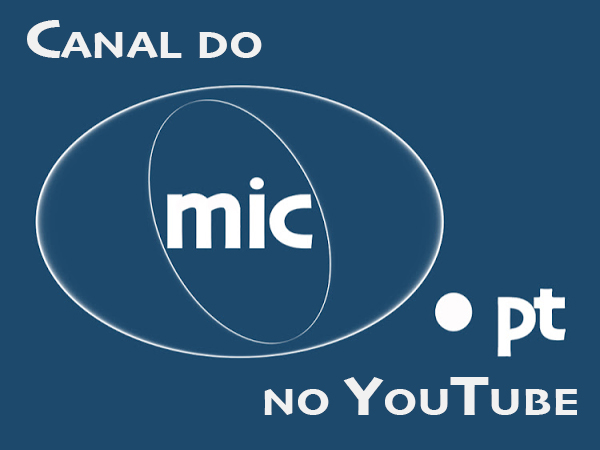BIOGRAPHY
Ricardo Ribeiro was born in 1971 in Aveiro. He had his music education (saxophone and voice) at the Calouste Gulbenkian Conservatory in the same city. In 1996 he obtained the Composition Degree in Composition at the Lisbon Superior School of Music where he was student of António Pinho Vargas and Christopher Bochmann. In 1998 he concluded the postgraduate studies in Composition (Corsi Internazionali Biennali de Alto Perfezionamento) with Franco Donatoni in Italy.
Between 1998 and 2002 Ricardo Ribeiro lived in Paris where, under the direction of Emmanuel Nunes, he continued his work in composition and research. Since then, and after having studied with Franco Donatoni and Tristan Murail, Emmanuel became a determining influence in his creative path as composer. In parallel to the already referred education, he also attended different courses and composition seminars directed by composers such as Magnus Lindberg, Philippe Manoury, Jonathan Harvey, Salvatore Sciarrino and Brian Ferneyhough, among others.
In 2003 at the University of Nice Sofia Antipolis he received the Master’s Degree in Esthétique et Pratique des Arts, under the direction of Antione Bonnet and with the thesis Invention et développement mélodique dans l’oeuvre Einspielung I (1979) d’Emmanuel Nunes. Presently at the Rennes 2 University he is preparing with the same tutor his Doctoral thesis under the subject, Dimensions complémentaires constitutives du temps. In order to follow his academic path the composer received various scholarships, that is at the Calouste Gulbenkian Foundation (from 1997 to 2001) and the Portuguese Foundation for Science and Technology (from 2002 to 2006).
Ricardo Ribeiro’s works have been presented around the world, having been commissioned by different European institutions in France, Italy, Denmark and Portugal, among others.
During seven years, between 2002 and 2009, Ricardo Ribeiro practically stopped composing, in order to find new ways of writing and approaching music. This also led him to the decision to withdraw many works from his catalogue. This period was a time of transition from the complexity and density towards simplicity and space, which nowadays define his music, in accordance with the motto: “to express the maximum with the minimum”. From the works composed before 2002, following the composer’s decision, many were withdrawn from the catalogue even though they had their public performances.
Nowadays in composition Ricardo Ribeiro uses spectral techniques, giving a lot of attention to the search of new qualities in music. He uses elements such as repetitions and “articulation of the material”, in this sense becoming close to composers such as Beat Furer or Pierluigi Billone. In this new phase one should emphasize various chamber music pieces and for solo instruments with or without electronics, that is, Intensités for clarinet and live electronics, written still in 2001, revised in 2006 and rehabilitated in 2009, recorded by Nuno Pinto on the Miso Records CD, Portuguese Music for Clarinet and Electronics; Ostinati (2010) for cello and live electronics, recorded by Filipe Quaresma on the CD, Portuguese Music for Solo Cello; In Nuce (2011) for saxophone and live electronics; In Limine (2011) for five instruments and live electronics as well as Asper (2016) for five instruments, both works commissioned by the Sond’Ar-te Electric Ensemble.
INTERVIEW
Education
In 95… I already attended some seminars with Emmanuel Nunes and this changed my way of writing and conceiving music. Initially I used some elements of rhythmic freedom – the tempi weren’t defined, I used expressions, such as Moderato. Yet between 1995 and 96 the tempi became precise and rigorous – 77 meant precisely 77. Moreover, the rhythm became much more rigorous, that is, some elements that before I had considered that could have been improvised, in 1995 and the following years they became conceived in a different way: I changed a little the writing, the music and the harmony… There was a period when I used materials developed with Chistopher Bochmann, but in 1995 I started being determinedly influenced by Emmanuel Nunes.
I worked during two years with Franco Donatoni and there is a funny story. In 1994 I was using some elements that were close to Donatoni’s language, above all when it comes to the rhythm. I got to know him at a course in Granada, in 1994 or 95. He really liked those elements, and thus invited me to go with him to Italy. Our meeting was more or less funny because, when I went to study with him, my work wasn’t what he had got to know (that is, what I had shown to him before, in Granada). In 1997 my music language was closer to Emmanuel Nunes – with more complicated rhythms. And Donatoni used to tell me: “you should do it more like this or leave these rhythms a little more… you could compose simpler rhythms, these quintuplets are complicated, that is the superimposition of quintuplets with septuplets…” And it continued during almost two years – Donatoni trying to convince me to be closer to his aesthetics… but there was no way back. I already reached another solution and there was no way back. With Donatoni I learned some very interesting aspects concerning musicality, but when it comes to the technique, there was a kind of “war” between us: he wanted me to return to the things that I wasn’t interested in doing anymore… and that constituted my beginning.
With Emmanuel Nunes I worked for four years until, 2002. And, as one can check in my small catalogue of works, this period was concluded in this same year with the piece, Composition no. 2 for chamber orchestra, a commission by the Aarhus Festuge. Then I was closer to Emmanuel Nunes, however I came to the conclusion that this wasn’t the right path and it was a nuisance as one gets angry... and needs seven years without composing! What was funny… in 2003 when I was in Nice I was still composing some pieces, but first I had to resolve my concerns and anxieties. The fact that I studied with Tistan Murail marked me to some extent; so much that I was to go to study with him in New York at the Colombia University. But then I talked to Emmanuel Nunes and I chose to work with him and not with Murail. And I don’t regret it. The point is that I was looking for other things, other languages. Working with these great composers gave me in fact little “freedom”. In other words, it was good, I learned a lot, but then I felt the need to free myself. It happened that I needed seven years. There are people who need no time, but perhaps this is my problem. It is a little as the Portuguese writer Virgílio Ferreira used to say: I need 40 years to unlearn the 40 years that I went on learning. He said it metaphorically and I actually had to put it in practice. I didn’t need 40 but 7 years. It was a kind of healthy process.
In 2002 my concerns had to do with the excess of notes that I used. Today for me the work has to contemplate other dimensions, not only the one of the notes. It can’t be only counterpoint. In my previous works the question of notes followed the line of a certain Stockhausen or Boulez… One of my problems was (and it is perceptible with some distance) working with composers, such as Emmanuel Nunes, Franco Donatoni and Tristan Murail – above all with Emmanuel Nunes with whom I learned the most, and who thaught me the most on music. I felt the antinomy of considering him an exceptional composer, of an unbelievable dimension, and then not being able to follow him… One can’t be “the son of”… The problem of not following the line of the people with whom one studied for a longer time, as they aren’t close to what one considers what 21st century music is or should be, makes me rather sad. One needs to find a kind of “adoptive parents” and forcibly gets closer to other composers with whom one didn’t have a close relationship. This makes me sad, but perhaps this is just how life is.
The composer and his own catalogue
Among the works prior to 2002, I couldn’t take into consideration everything that I was composing. I have always given value to the public performance (although there are five or six works that haven’t been premiered). At least around 20 that belong to this catalogue have been premiered and, almost in all cases, I’ve decided to withdraw them. If it is to be revised, one will do it once again. I also don’t have the problem in saying: “I made rubbish, for me this is rubbish; it can be withdrawn from the catalogue”. Nowadays I no longer have these concerns, I accept everything that I compose. Before I had had plenty of concerns: “this is rubbish, I will put it on the rubbish shelf”. At present I am able to accept that not all the works are equal: there are the luckier and the better ones, and other ones that move away more from the original dream, but that I accept in the same way. After seven years I am not disturbed that this or that work is inferior – it is just inferior, doesn’t matter. Franco Donatoni frequently told us about his catalogue: “I don’t understand why there are people who like so much some of my inferior pieces, the ones that I value less” (and, nevertheless, he never withdrew them from his catalogue).
Intensités: the hinge in the catalogue
The initial idea has always been to create a version with electronics. The work had 10 minutes, and I decided to cut it to six. It was the only thing I decided to do – chose some of its bits with scissors… to cut and reduce it. I finished the work when I was still studying with Emmanuel Nunes. And it has remained in my catalogue as it also concerns the research that I made with Nuno Pinto in Paris. In 2006 Nuno Pinto asked me: “so is it going to be out or not?” And I replied: “perhaps it’s time to let it go out”. And so I cut four minutes off it and handed the score to Nuno Pinto.
Until 2002 my concerns as a composer were stuck to certain problems, such as complexity. Moreover, there is plenty of counterpoint in the piece Composition no. 2 for chamber orchestra (2002). The electronics in Intensités already works not as counterpoint, but rather as a veil. There is a clarinet line to which I apply a glaze or transparency, yet it doesn’t change the work, but rather it maintains its own structure. This remained until today: the electronics in In Nuce (2011) is also a kind of glaze, which above all has to do with my way of thinking. I needed seven years to come to the conclusion that today the most important to me is to have simple ideas that are applied scrupulously. In In Nuce it is possible to perceive: even while reducing the material, I manage to write works with larger duration and less substance. Seven or eight years ago it would be unthinkable to write this work, as I would find it to simple (to repetitive)…
In search for perfection and the separation from complexity
I normally joke with myself when it comes to these questions. I’ve left the worry of perfection behind. In Intensités, which seems quite easy, there is a line to follow and, not being a hyper-complex writing, it is very difficult rhythmically; when one listens to it, this difficulty isn’t audible. Then I discovered a Chinese proverb that says: if one sharpens a knife constantly one is left without a knife. Emmanuel Nunes was struggling with me: “you can’t! You have to stop having ideas! You have to stop polishing! You need to write more!” Sharpening the knife eternally until reaching a perfect edge is nonsense. Once you realize it and stop, the knife disappears. The ideal is to have the knife sharp and not sharpening it eternally. Nowadays I write with a lot more ease. I try to express the maximum with the minimum, that is, to say a lot with only a few notes and within a larger duration.
When one writes a work, there are two dimensions of the same reality: on the one hand, every work of art is initially determined by the historic, social and cultural context (in which it is created); on the other, every work of art produces a space and time of its own, carrying the same elements that characterize a determined period. Not only do they assimilate what is around them, but also they leave marks of this assimilation, transformation and of these elements. This is to say that, for example, today I use elements, such as repetition and articulation of material. They are closer to composers, such as Beat Furer or Pierluigi Billone, who I consider to belong to the new Austrian or the new Darmstadt school. I can be on the wrong track, but at least for me it is much more interesting to be among the composers who create music based on research, taking all the risks and trying to find something new, than the ones ideologically tied up to the aesthetic currents of the 1980s and 90s, and which nowadays can be found quite frequently in Portugal. Today, if I have to be influenced by a school, that means to get influence from a current that I consider the most up to date as possible. This is the concern that I have, that I have always had and that is now and further on prominent.
Ricardo Ribeiro, August 2011
© mic.pt





